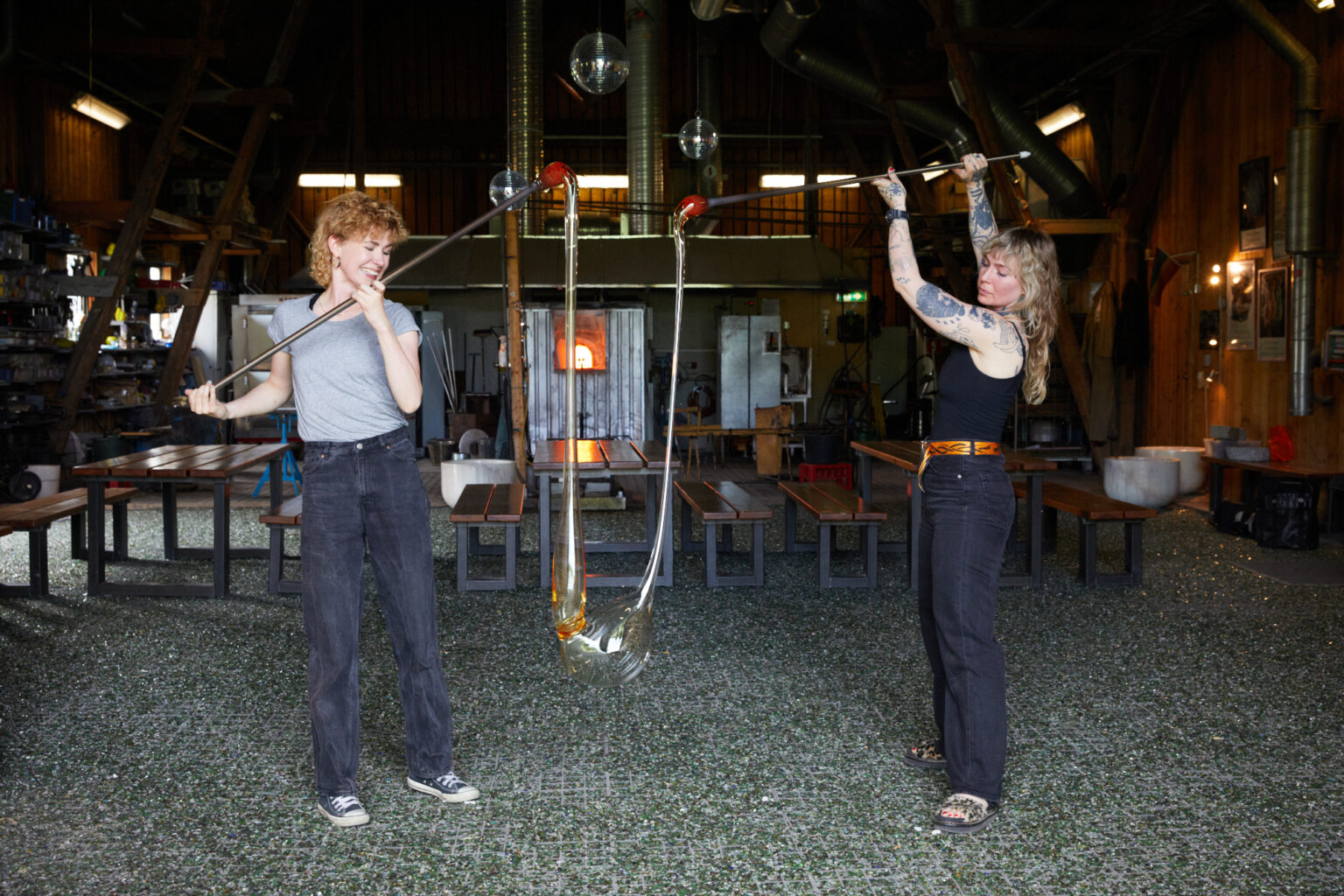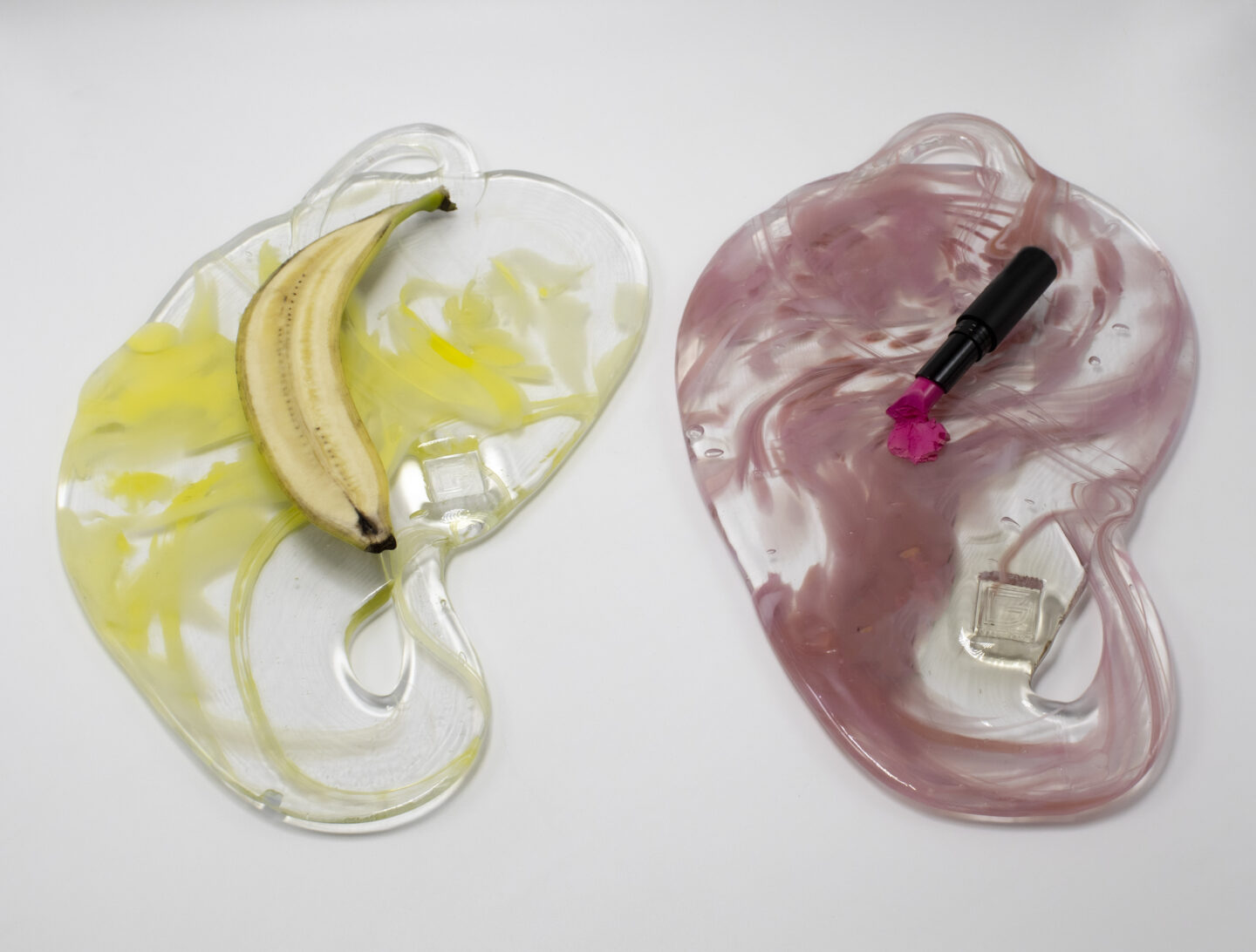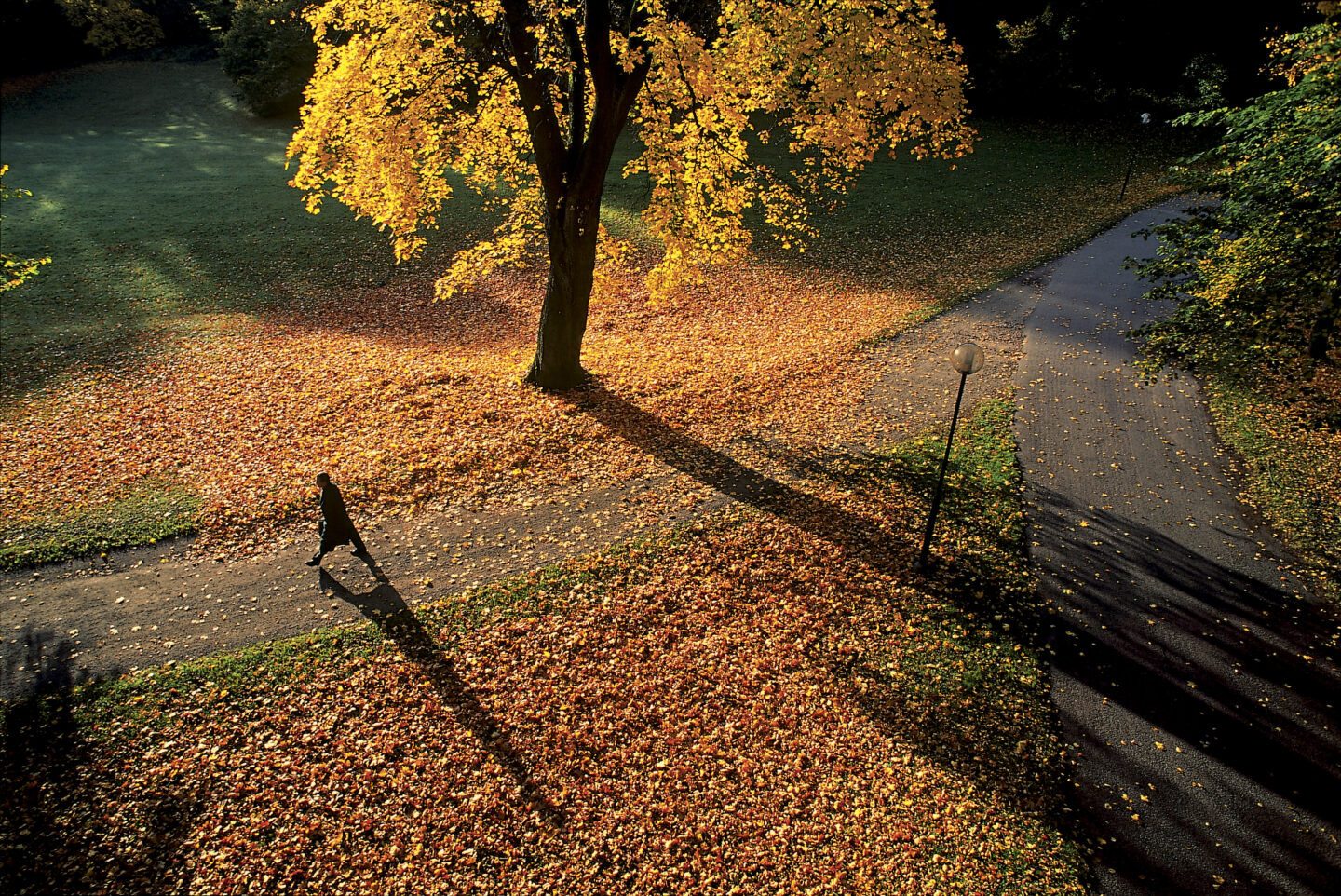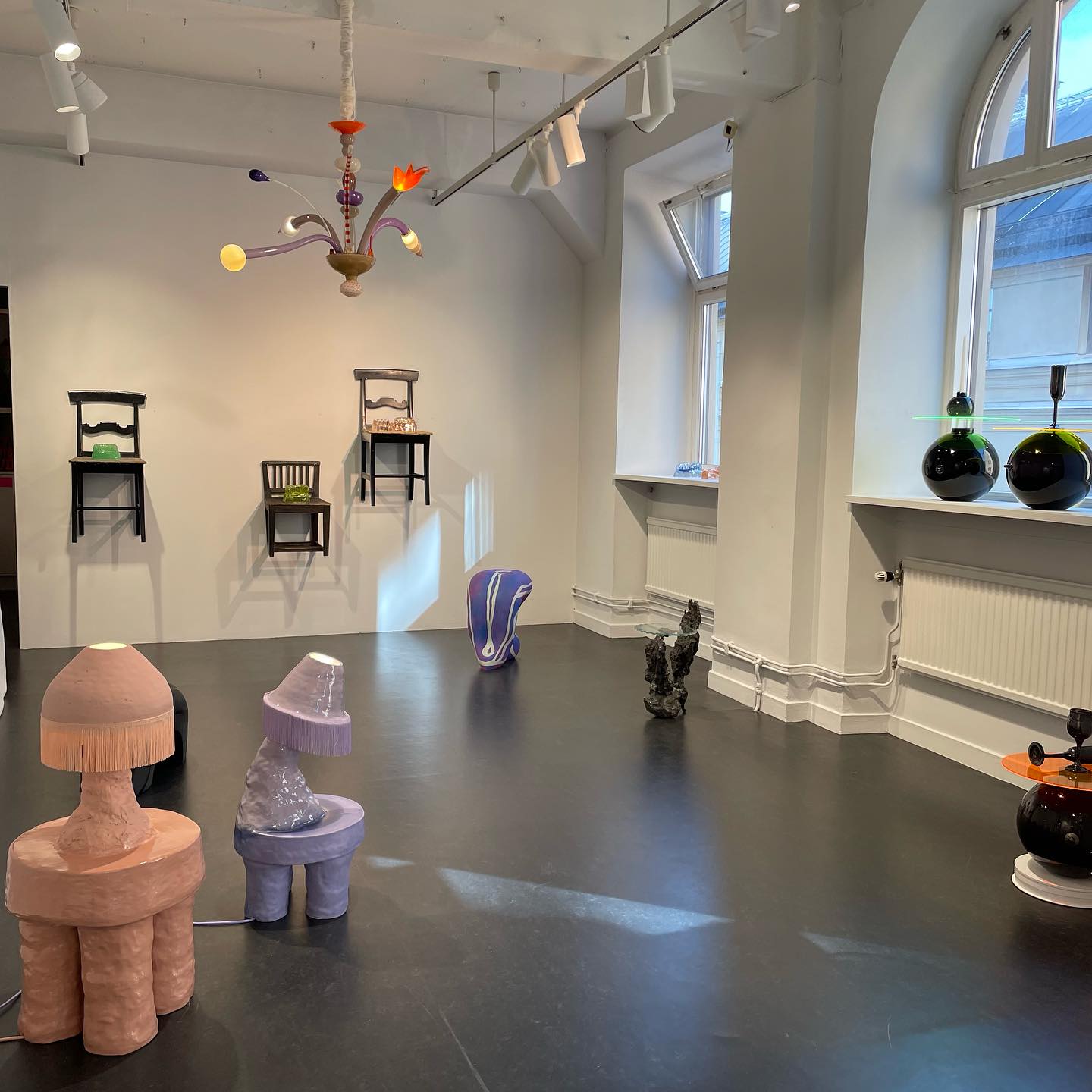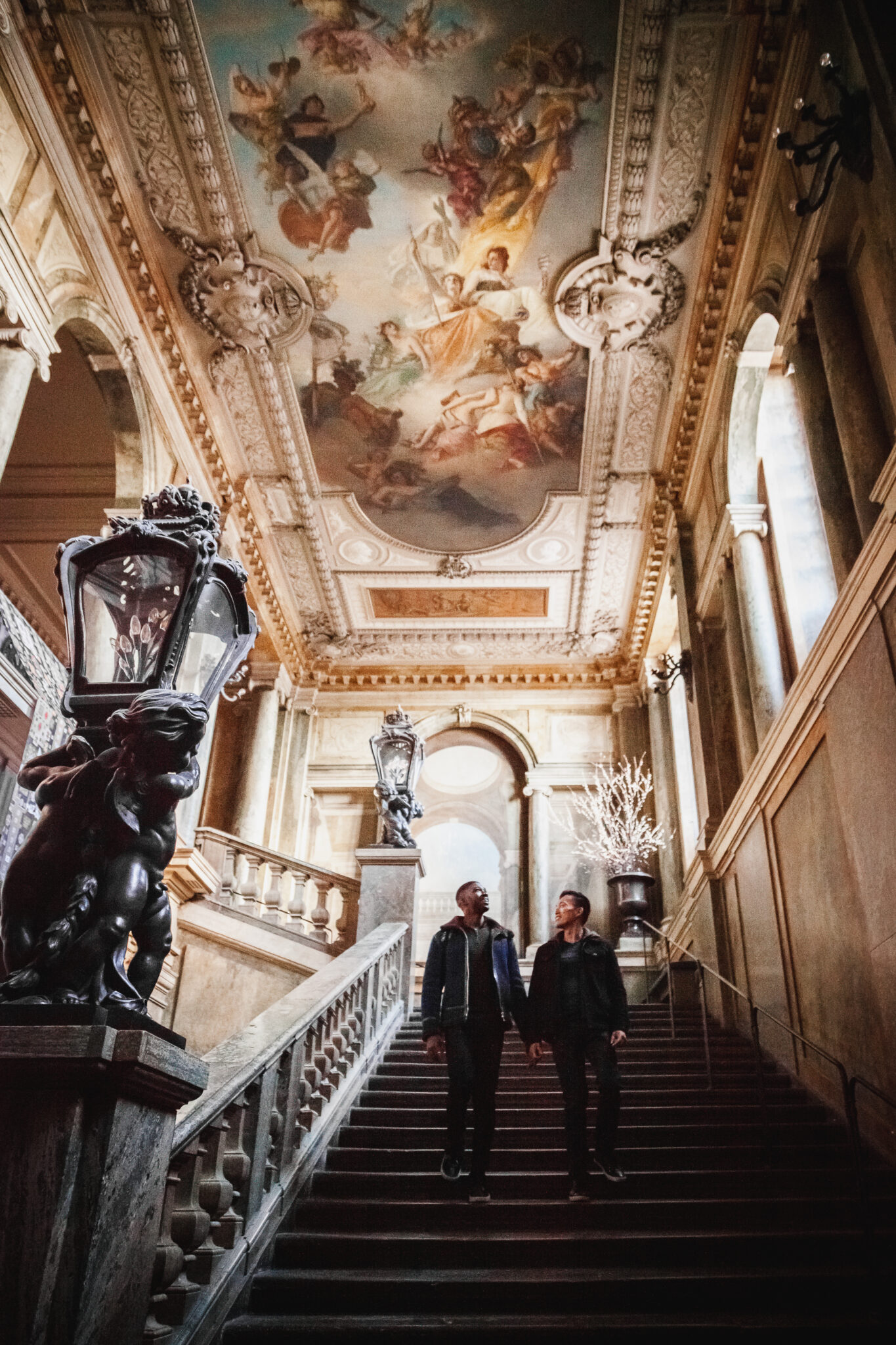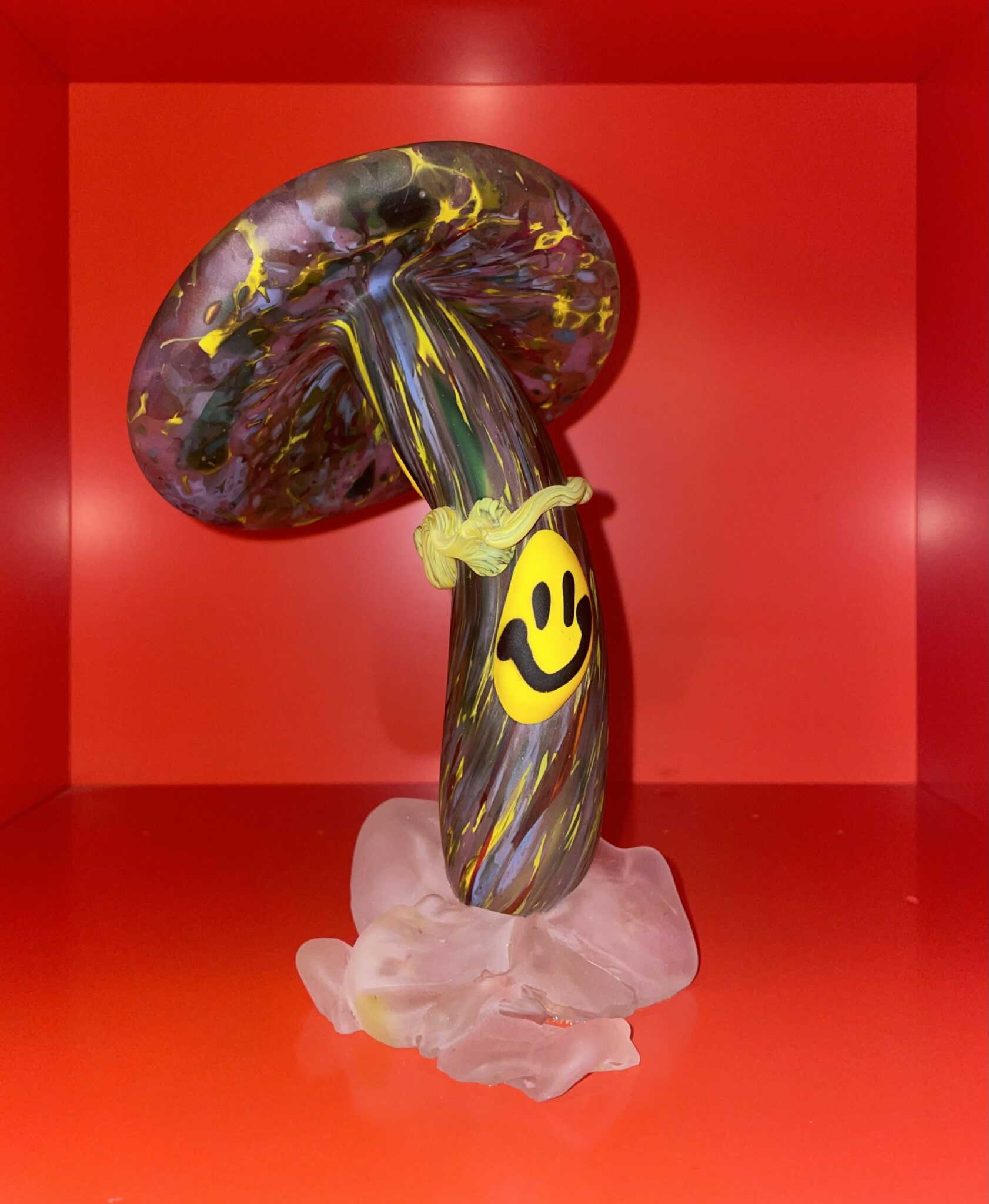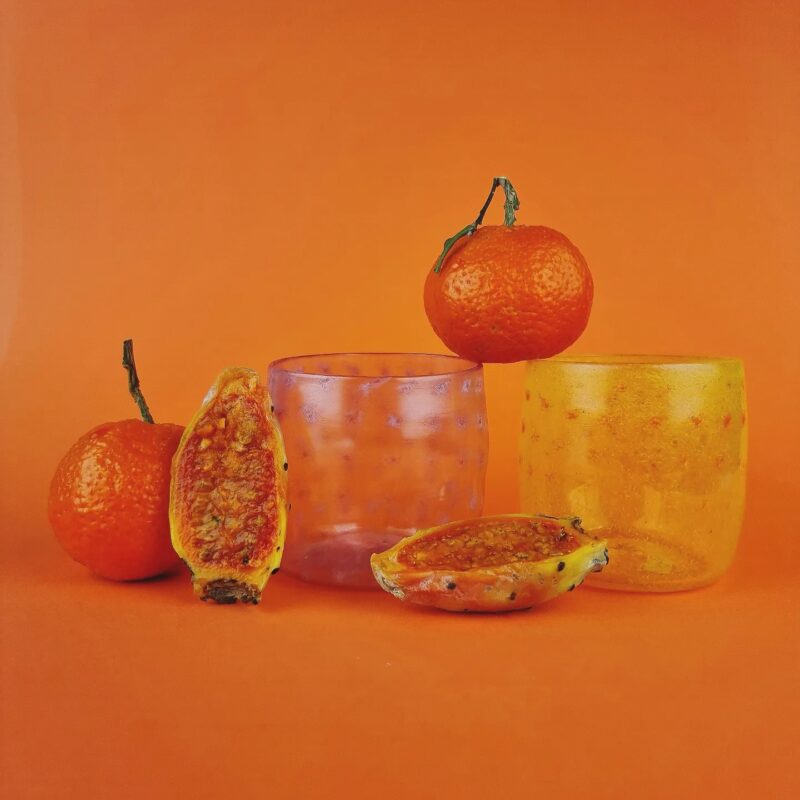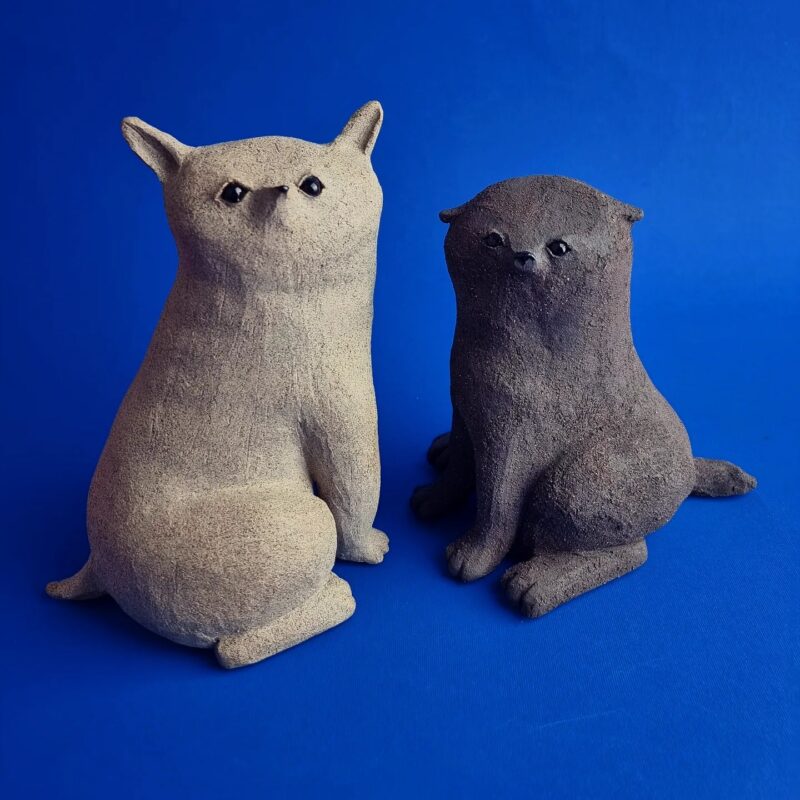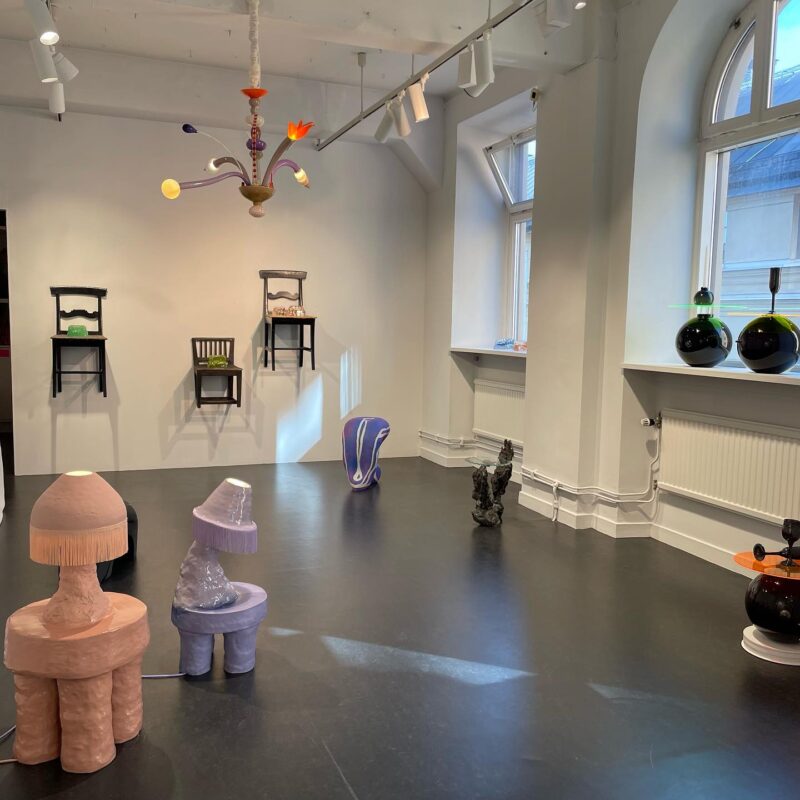Running an environmentally friendly glass studio is not easy: At Glasbolaget Olofsson & Kristofersson Bredberg use landfill gas from the nearby waste dump to produce the most environmentally friendly glass products possible. They also use recycled shards from the utility and art glass industry to create not only commissioned pieces for other artists, designers or architects but also their own works of art. The duo is known for their innovative new glass creations – ranging from humorous pieces to bowls with marble-like textures.
© Courtesy of the artists
Which place do you currently call home and where do you work on your projects?
Erika:I live in a suburb south of Stockholm. And work in Bro in our glass studio – 40 kilometres from my home.
Ammy: I live in Bro – 5,5 kilometers from our glass studio / work (north west from Stockholm).
Do you have a favourite place in your area where you like to relax and linger?
Erika: I grew up in the northern part of Sweden, far out in the countryside. That’s why I find it very relaxing to go to the glass workshop, where it’s not so lively – a contrast to where I live in Stockholm.
Ammy: In addition to my artistic activities, I play in a touring band and am in a long-distance relationship. So when I have some time to relax at home, the most relaxing thing to do is just stay at home, do some gardening and listen to an audio book. Or take a bath.
© Jeppe Wikstrom
Are there any urgent political issues or problems in your region?
Sweden is becoming more and more polarised and has a self-image of being a fairly equal society with cheap or free public services, education and social programmes. But over the last 20 years, economic inequality has risen sharply, and now increasing immigration to Sweden is cited as the reason for this, when in fact it is a political direction towards the liberal right that has been working for years towards a society with less public ownership. And many taxes aimed at the richest part of the population, such as the tax on property or capital gains, have been abolished or reformed to reduce taxes on the rich.
In your opinion, what has developed well in the last 5 years – and what has not?
We had a good system for artists and grants to support us. But lately the government has been taking funding away from where it’s needed, like schools and culture, and that has an impact on small institutions and alternative platforms for art.
Do you know a hidden gem when it comes to local manufacturers – whether it’s arts and crafts, sustainable products or food?
There is a local farmer, Christer, near our glass studio. He sells home-grown corn, flour and sunflowers in the autumn, he just puts up a sign on the road when he’s open.
One way to find more local producers is to join a Facebook group called REKO (they also have groups for other regions). Then you will find producers and manufacturers that you can visit if you want. Often you can also order what you want to buy there and then pick it up at a planned REKO meeting if you want to buy from different local producers and don’t want to visit them all.
Is there anything particularly innovative in your region? Also in comparison to other places you have already visited?
We have allemansrätten, in English ‘right of public access’. This means that everyone has the right to pick flowers, gather mushrooms and pitch a tent, even in someone’s ‘private’ nature. You can download the guide for free here.
Do you have a secret restaurant tip that you would like to share with us?
There is a special restaurant close to where Erika lives in Bagarmossen, Tina Maria. The specialty is pide, Turkish flatbread.
Ammy: Every first Saturday of the month, Kafe 44 in the centre of Stockholm hosts ‘Folkkök’ from 11:00-16:00. They serve great vegan food and pastries and you pay what you want to pay or can afford. All proceeds go to a good cause and you can usually read on Instagram which organisations/projects they are raising money for.
Kafé 44 also has an anarchist bookshop which is open every Saturday from 12:00 to 16:00, and every Tuesday and Thursday from 19:00 to 22:00 there are concerts with punk and other alternative music.
Is there a local shop whose products are only available in your region?
Blås & knåda, a shop with unique handmade ceramics and glass. The shop is owned by the manufacturers and also has an exhibition space where contemporary handicrafts are displayed.
What are your 3 favourite apps that you use every day and couldn’t live without?
– Spotify
– SR-swedish radio
– Instagram
Do you have any favourite newspapers or online magazines? And how do you keep up to date with politics or social and cultural issues?
Erika: Svenska Dagbladet for daily news. We also use the printed magazine as a glassmaking tool. We use the wet paper to mould the hot glass by hand. Another one is Article 14 – a newspaper about/for refugees in Sweden. My current obsession: a digital and printed magazine about art and design.
Ammy: For local news I read the free local (printed-) newspaper Mitt i Upplands-Bro. There are several versions of ‘Mitt i’ in the Stockholm region, depending on where you live. For news from a wider perspective, I think Swedish public television and radio (SVT and SR) are the best.
Imagine you could be mayor for a year – what would you change?
Free culture activities for all kids and free public transport.
© One Upon a Journey Stockholm LGBT
One last question: If you could choose another place to live – regardless of financial or time constrains – which one would you choose?
Erika: In a house surrounded by pine trees on a tiny island in the middle of the sea, which I pass on my way north in the Höga kusten area.
Ammy: Skellefteå in Sweden.
© Courtesy of the artists
